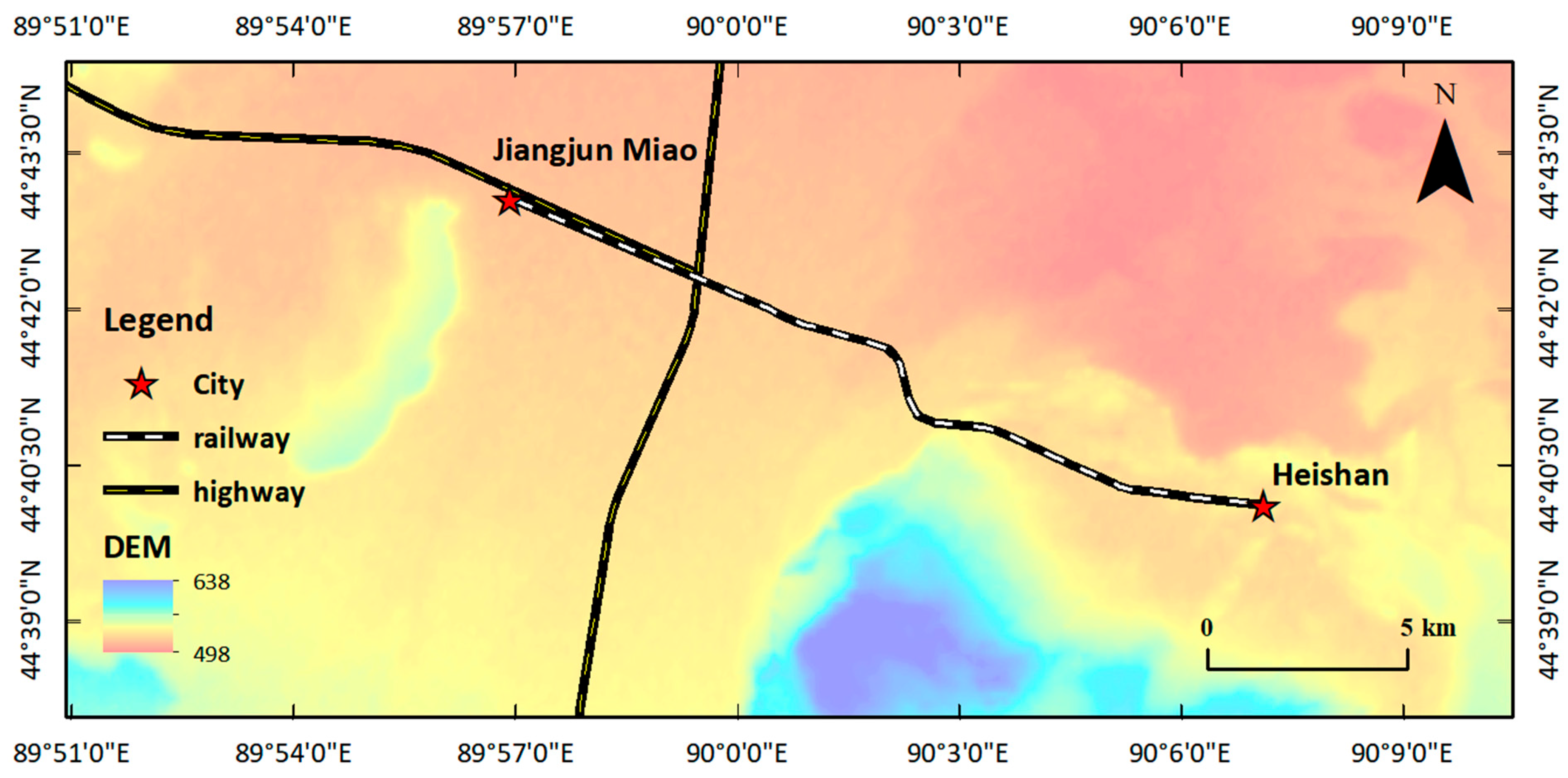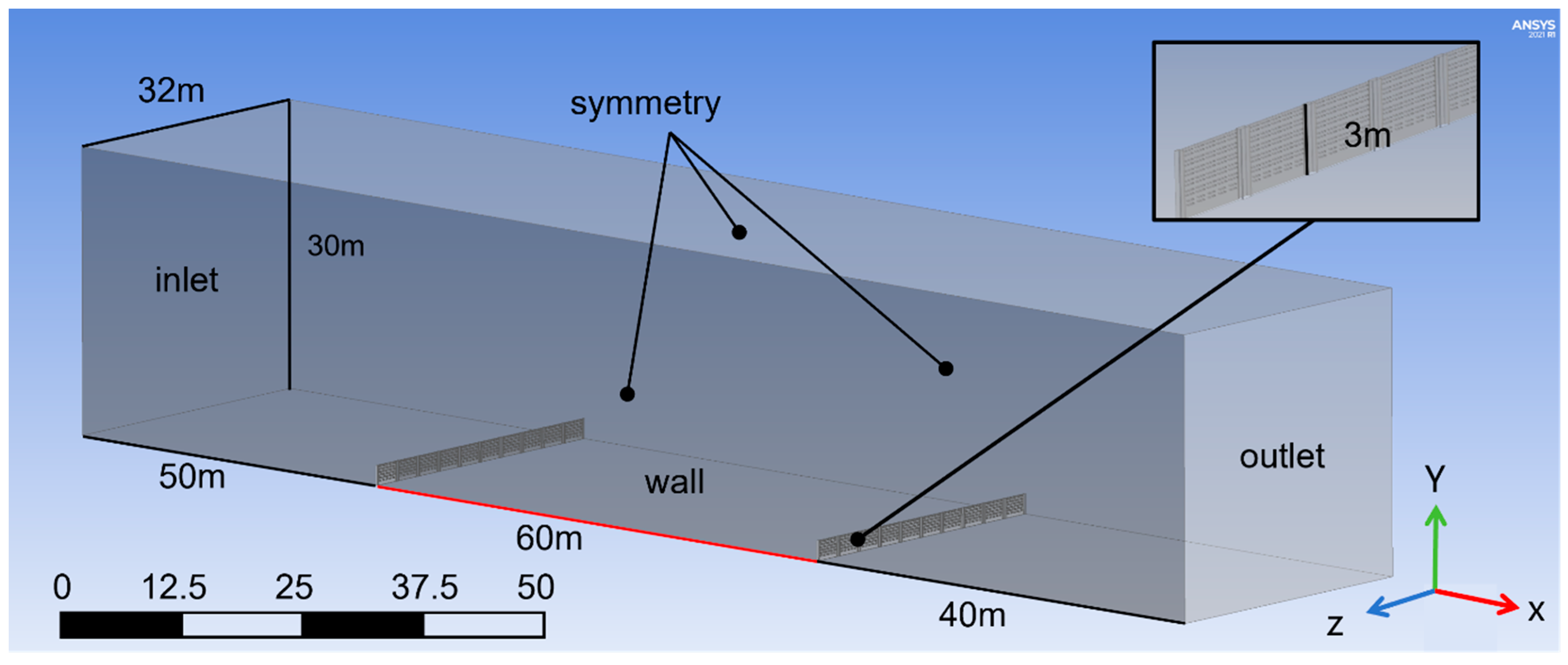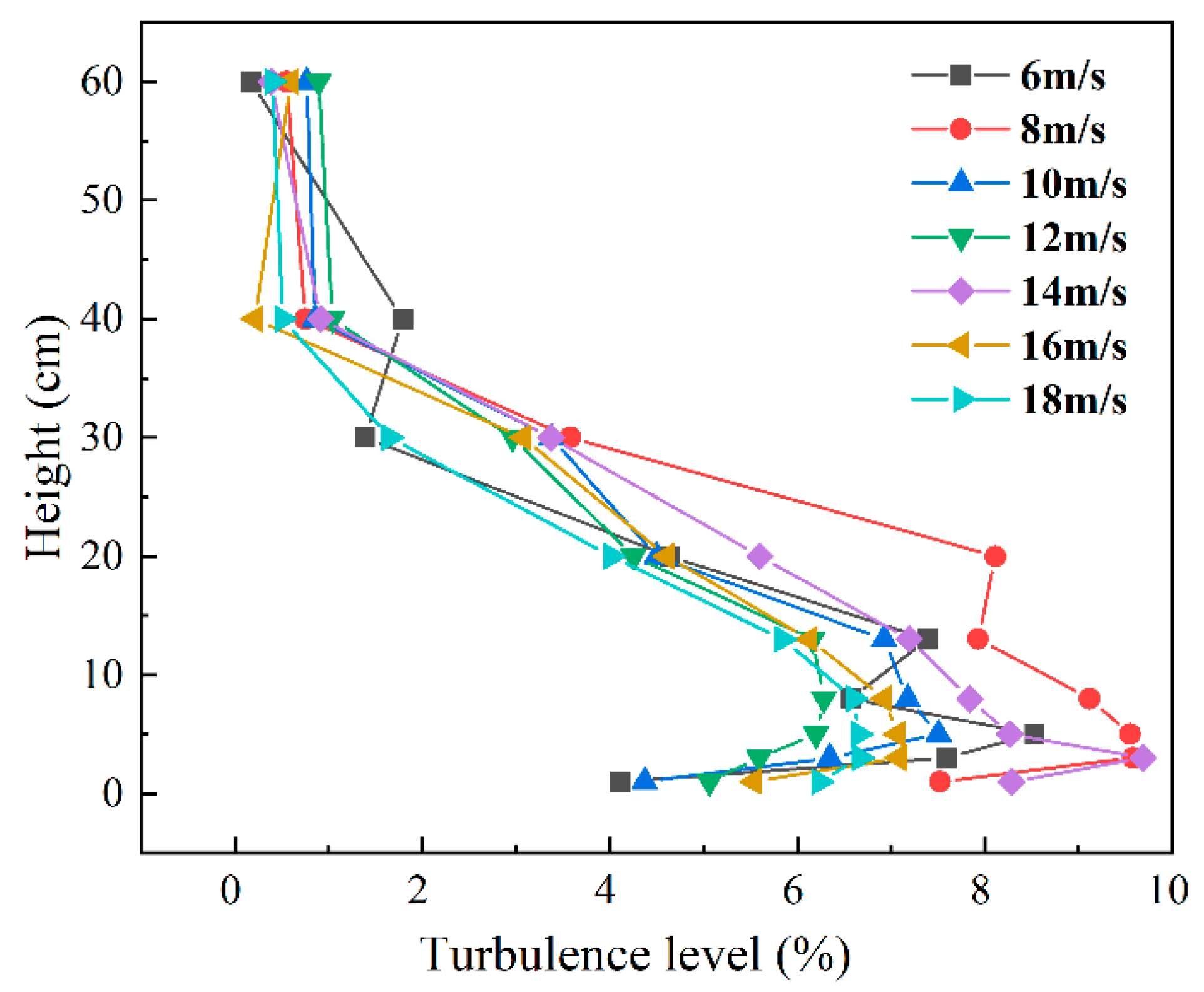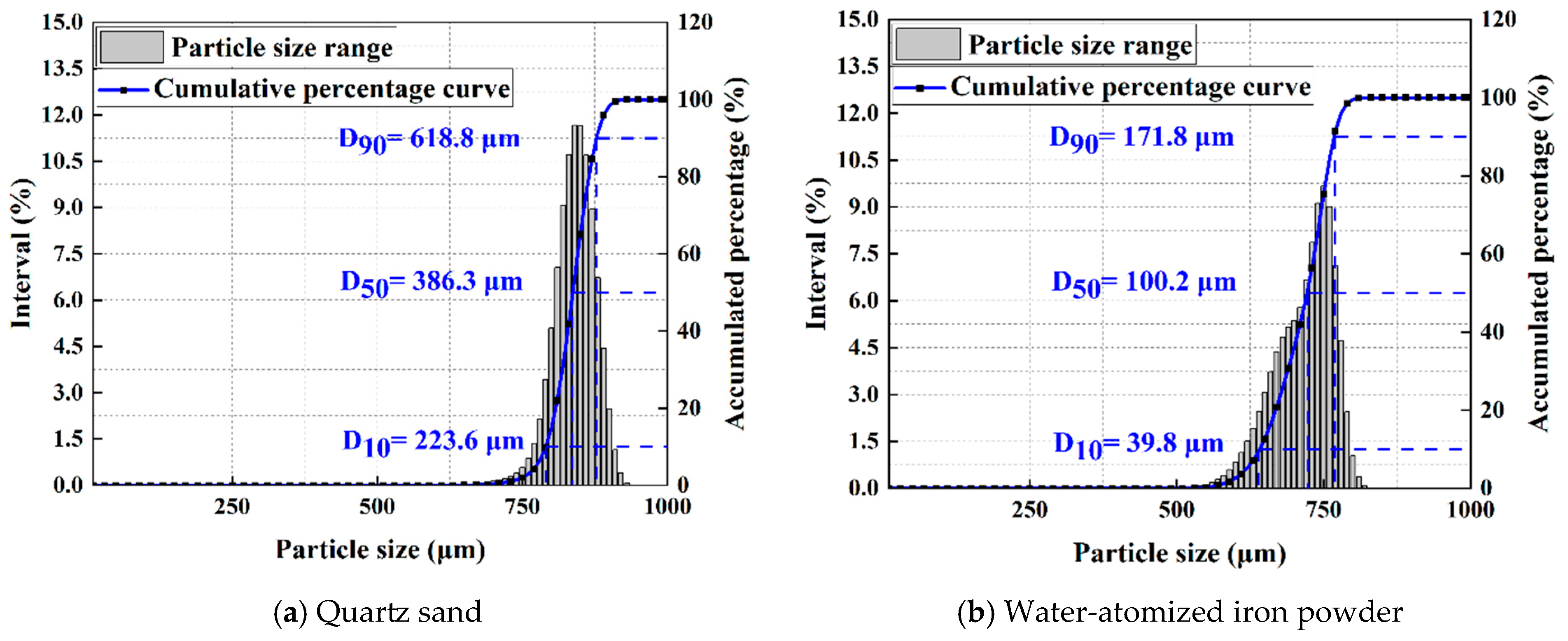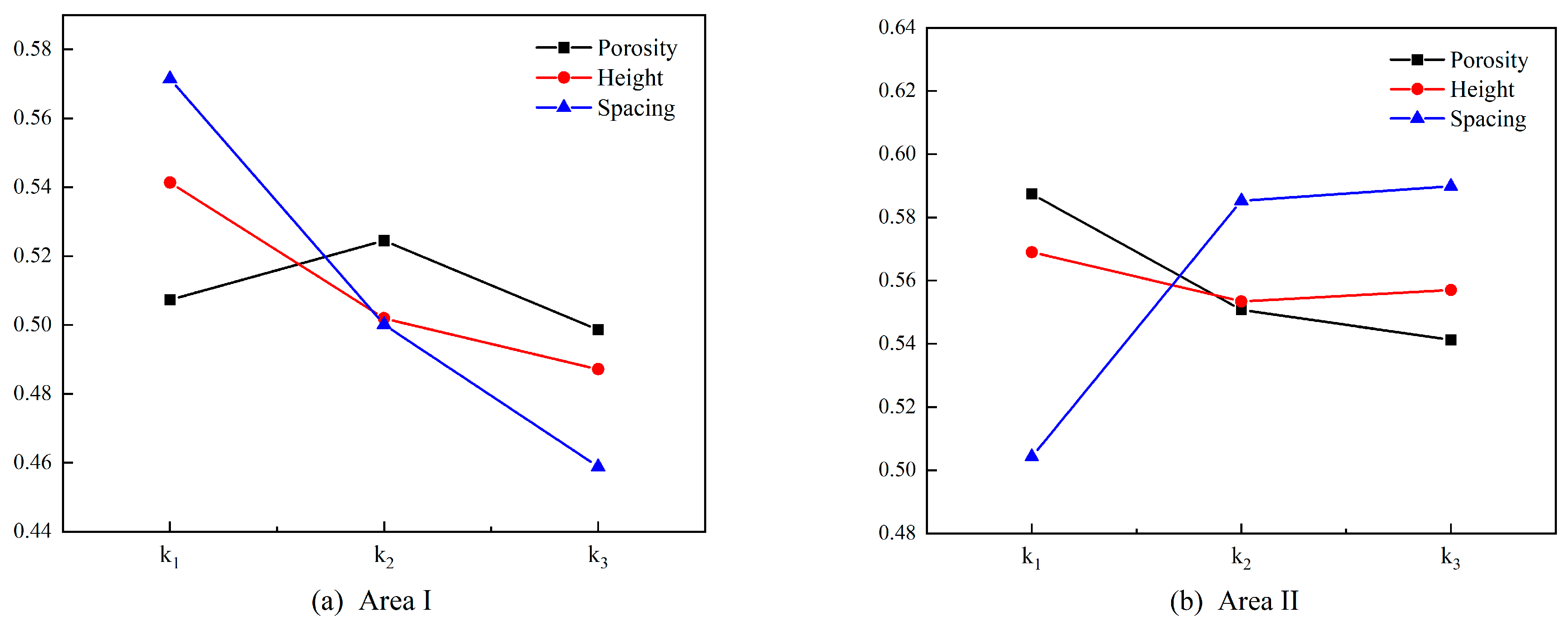1. Introduction
Disasters, rather than occurring in isolation, are often complex and compound [
1,
2]. When two or more disasters occur simultaneously, or when one disaster triggers another, a “composite disaster” is formed [
3]. Compound disasters are usually described in primary disasters and secondary disasters, and the “compound loss” incurred by compound disasters is often more complex and more challenging to control than the loss caused by a single disaster. The losses caused by such composite disasters are often more severe and complex than those caused by single disasters, making their management and mitigation more challenging. Wind-induced sand deposition and wind-induced snow cover are both surface gas–solid two-phase flows driven by wind, and both processes involve the transport and redistribution of surface materials [
4]. Existing studies primarily focus on the wind–sand process [
5,
6] or the wind–snow process [
7,
8] alone, but rarely examine the compound disasters resulting from their interaction. Wind–sand flows and snow drifts are important natural disaster-causing factors that can be highly harmful to traffic lines [
9,
10], as shown in
Figure 1. In particular, the compound disasters caused by the interaction between wind-induced sand deposition and wind-induced snow cover in the winter are even more harmful [
11,
12].
Wind–sand flow, as a typical surface dynamic process in arid and semi-arid regions, is frequently active in desert, sandy, and Gobi areas. Its core feature is the transportation of sand particles via creeping, saltation, and suspension [
13,
14]. This process poses multidimensional and persistent hazards to railway lines. Saltating and suspended sand particles gradually bury tracks and switches, leading to signal failure. High-speed moving sand particles also cause abrasion to components such as contact wires and locomotive windows, thereby shortening the service life of equipment. Long-term wind and sand erosion further compromises the stability of subgrade slopes [
15,
16], potentially triggering structural safety issues like slope collapse. In recent years, numerical simulation has become a key approach in both academia and industry for analyzing and controlling wind–sand disasters. Beyond railway engineering, simulation-based techniques have been extensively applied in other engineering fields such as energy extraction, geothermal resource development, and aerospace [
17,
18], where they serve as powerful tools to reveal complex fluid–solid coupling and optimize protective structures. These studies demonstrate that numerical simulation provides a universal theoretical and methodological foundation for understanding multiphase flow phenomena, thereby reinforcing its significance in the present research. Building upon these advances, numerous scholars have conducted wind tunnel and numerical experiments to optimize fence structures and improve the prevention and control efficiency of wind–sand disasters. Zhang et al. conducted wind tunnel experiments to study the protective effects of sand fences with different porosities and row arrangements. Their findings indicated that a double-row sand fence with a porosity of 30% demonstrated the best performance in terms of wind resistance and sand-blocking efficiency [
19]. Xin et al. showed that placing two sand fences near railway subgrades, with a combination of optimal porosities (30% and 20%) and horizontal openings, could achieve a windproof and sand-fixation efficiency of up to 97.16% [
20]. Wang et al. revealed that a single-row, high-vertical sand fence creates a wind–sand flow field with distinct zones: a deceleration zone, acceleration zone, turbulence zone, and stabilization zone. Their study concluded that the optimal spacing for sand fences is 2H (where H is the height of the fence), and the best fence height is between 1.5 and 2.0 m for maximum protective efficiency [
21].
Unlike aeolian sand hazards, blowing snow is widely distributed in temperate, frigid, and high-altitude mountainous regions [
22]. Its core process is the coupling of wind fields with snow particles, involving particle entrainment, turbulent diffusion during transport, and deposition in accumulation zones [
23]. This hazard primarily threatens railways during winter: strong blowing snow can bury tracks and turnouts within a short period, while long-term snow cover reduces the service life of subgrades, pavements, and associated facilities [
24]. The prevention and control of blowing snow hazards mainly rely on physical barriers and optimization through numerical simulations. Lei et al. identified the key design parameters of snow fences and their sensitivities, demonstrating that fence height is the dominant factor influencing snow distribution within the protection zone, while porosity plays a decisive role in controlling snow accumulation on the subgrade surface. Their results showed that a snow fence with 75% porosity, a height of 4.8 m, and a 60 m setback from the subgrade effectively altered the airflow field and reduced snow deposition on the track [
25]. Qiu et al. found through wind tunnel experiments that snow deposition exhibits a “U-shaped” distribution on embankments and an “M-shaped” distribution in cuttings. Their study determined that windbreak walls achieved optimal performance when porosity was set at 50%, height at 3 m, and spacing at seven times the wall height [
26]. Yang et al. using numerical simulations, further revealed that leeward slopes of roadways accumulate more snow and require longer times to reach equilibrium, particularly under snowfall conditions. Snow fences effectively intercept drifting snow on leeward slopes, reducing near-surface snow particle concentrations and thereby decreasing short-term snow deposition [
27].
Although prevention and control technologies for individual aeolian sand and blowing snow hazards are relatively mature, compound disasters involving the coexistence of wind-blown sand and snow frequently occur in regions such as Xinjiang and the Qinghai–Tibet Plateau during winter [
28]. At present, railways are typically equipped with sand-blocking or snow-blocking measures tailored to a single hazard type, while the cross-adaptability of these measures is often overlooked: sand-control facilities rarely consider snow-control performance, and snow-control structures are seldom evaluated for their sand-control capacity. Owing to the distinct physical properties and disaster cycles of snow and sand particles, existing measures show seasonal limitations. In some areas of Xinjiang, sand-control facilities perform effectively during summer but fail to mitigate wind-induced snow cover in winter, which continues to block transportation and restrict economic activity. Conversely, snow-control measures can successfully reduce snow accumulation in winter but prove largely ineffective against sand deposition in summer. Moreover, due to spatial constraints along railways, it is impractical to install multiple sets of sand- and snow-control facilities simultaneously.
The Jianghei Railway (Jiangjunmiao to Heishan) is located in the Junggar Basin of Xinjiang and is designed as a National Railway Class II line. From 25–28 December 2021, the Jianghei Railway experienced prolonged interruptions in train operations due to wind-blown snow and sand burying the tracks, severely disrupting transportation order. Beginning at 2:00 a.m. on December 25, the northern part of Qitai County in the Changji Prefecture of northern Xinjiang experienced continuous snowstorm weather. The Jianghei Railway, from Jiangjunmiao to Beishan, encountered persistent adverse weather conditions with wind-blown snow and drifting sand, with sustained wind speeds reaching 10–13 on the Beaufort scale. Starting at 10:00 a.m. on December 25, four stations along the Jianghei line lost control of six sets of switch equipment, which became inoperative. Wind-blown sand and accumulated snow buried the tracks across six sections spanning 20 segments, totaling 4840 m. The longest section, covered with sand and snow, stretched 1650 m with a burial depth of 1.7 m. This resulted in the closure of two sections for 50 h and 14 min, and speed restrictions in four sections for 104 h and 15 min, as shown in
Figure 2. Due to the railway line passing through uninhabited areas during the snowfall period, there is a lack of historical meteorological observation data. Currently, the study of wind-induced sand and snow compound disasters on the railway line remains in the preliminary judgment stage. However, the formation of these compound disasters has already severely impacted the normal operation of trains. Therefore, the prevention and control of wind-induced sand and snow compound disasters are urgently needed.
With the intensification of climate change, compound hazards have become increasingly frequent, posing significant challenges to the long-term safety, reliability, and sustainability of railway systems in arid and cold regions. Sustainable transportation infrastructure requires not only effective short-term hazard mitigation but also long-term resilience that reduces maintenance demands, prolongs service life, and minimizes environmental disturbance. Integrated sand–snow control measures are therefore essential for ensuring stable transport capacity, reducing energy and resource consumption associated with repeated repairs, and supporting the ecological security of vulnerable desert–Gobi environments. In this context, the present study contributes to sustainability by providing scientifically validated mitigation strategies that reduce disaster risks, improve infrastructure durability, and support sustainable regional development.
4. Conclusions
This study conducts wind tunnel tests at the State Key Laboratory of Desertification and Aeolian Sand Disaster Mitigation in Gansu Province, China, as the primary means of research. Following the principle of “guiding tests through simulation and supporting simulation with tests”, simulation and test parameters are set with reference to the field situation in the study area. A Bettersize 2600 laser particle size distribution analyzer is utilized to select simulation materials, and a YPP-I digital barometer is adopted to measure air pressure, humidity, and temperature. The self-made particle collector and PVC fence model are employed to assist the tests, and the protective effects of double-row fences at different incoming wind speeds are analyzed. The main conclusions are as follows:
(1) This study uses water-atomized iron powder and quartz sand to replace sand and snow particles, respectively, in wind tunnel tests. Test results indicated that water-atomized iron powder can effectively replace sand particles, and that quartz sand can serve as a suitable substitute for snow particles. It is possible to accurately simulate the migration and deposition process of sand and snow particles by simulating wind–sand and wind–snow compound disasters. Similarly to sand particles, water-atomized iron powder can show the same particle transport characteristics in the simulation of wind–sand flows. Quartz sand, on the other hand, is similar to snow in particle size and can well represent the particle motion laws of snow drifts. This substitution method provided a reliable experimental means for similar future research on wind–sand and wind–snow compound disasters.
(2) This study discusses the application effect of double-row fences in preventing and controlling wind–sand and wind–snow compound disasters by combining wind tunnel tests and numerical simulation. It reveals that under different wind speeds, double-row fences have a significant inhibitory effect on the wind flow field and can effectively inhibit the transport of mixed sand and snow particles. Moreover, compared with single-row sand barriers, they have a longer protective range.
(3) Orthogonal tests and range analysis reveal the impacts of fence porosity, fence spacing, and fence height on the deposition volume of composite particles. Fence spacing has the highest sensitivity to particle deposition, followed by fence height, while porosity has the smallest influence on composite particles. When designing protective fences, a reasonable fence spacing can significantly improve the protective effect. Adjusting fence height can significantly improve the protective effect under extreme wind speed conditions.
(4) Wind tunnel tests are conducted to explore the particle transport capacity and motion laws of mixed sand and snow particles. The mass of particles decreases with increasing height under each of the three layouts, but the composite source exhibits a stronger particle transport capacity than either the single snow source or the single sand source. In particular, at high wind speeds, the interaction between the deposition of snow particles and the migration of sand particles produces a synergistic enhancement effect, making the transport of particles more complex. This finding highlights the distinct nature of wind–sand and wind–snow compound disasters, which can pose significant challenges to single prevention and control measures, particularly in engineering practice.


